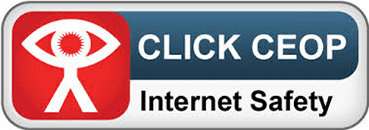Ideas for Helping you child at Home
In the event of an unplanned school closure, home learning activities will be posted onto Tapestry (our online journal). Alternatively you could try some of the activities below.
Physical Development
- If confined to the house you could make little obstacle courses for your child/children from cushions. If space allows encourage your child to practise jumping (Can your do 6 big jumps?), hopping, crawling, rolling, running on the spot.
- Do a mini exercise workout with them – practising stretches, claps and practice moving forwards and backwards.
- Dance with them! Choose a song that you both enjoy and just have fun!
- Help your child to learn about healthy foods by letting them help you make a healthy fruit salad or soup.
Literacy
- Help your child to develop the correct pencil grip if they are ready for this.
- If they are not keen to do the above, they can still develop their finger control (which will help them later in writing) through activities such as playing with lego, making necklaces from pasta on a string, cutting out shapes from cards/magazines etc (use children’s scissors only).
- Help your child to write their name. Only the first letter should be a capital letter, the rest needs to be lower case letters. Some children may not be ready for this yet, but may enjoy just writing the first letter. Praise and encourage what they can do – don’t try to make them as you risk putting them off.
- Give your child any unwanted paper/cardboard to draw on. At first it may just be scribble, but over time and with practice this will develop into faces and more representative pictures.
- Get them to find letters that they know in books and in the environment. It is the letter sound they need to learn first, not the name (eg “sssss” for S, not “ess”).
Mathematics
- Counting is the first basic numerical skill that children need to learn. Use small groups of objects first, and encourage your child to either move each object or point to each object as they say each number. You may need to encourage them to slow down, as many children start to speed up and then miscount. You could ask them to count eg their toy cars, or smarties. Focus on numbers up to 10 mainly – children need to be confident in their understanding of these numbers (not just the counting rhyme) before they move on to higher numbers.
- Counting out an amount of objects from a bigger group of objects is the next step on. For example you could ask them to count out 4 carrots for you from a bag of eg 10 carrots. They may find this tricky at first, so need lots of practice.
- Use meal times or bath times to develop concepts of “more than” or “less than”. Eg “ I have less potato than Daddy. You have more than your sister”. “Could you put more water in this cup?”
- If your child has a construction kit at home eg lego, stickle bricks, talk about the shapes as they play but also properties of shapes eg “Can you put that piece in the corner” “Shall we make the tower have a pointed top?” If you don’t have any construction kits, you could use small boxes from packaging eg toothpaste boxes, shoe boxes. Use mathematical language as they play such as “Can we make it taller? Can we make it longer?”
- Jigsaws are an excellent way for children to develop their observation skills, and learn about corners, sides etc. Show them “jigsaw techniques” such as completing the sides first. If you don’t have any jigsaws, they can be borrowed from the library. There are also jigsaws on children’s apps such as Bob the Builder.
Understanding the World
- Some of the Blue Planet documentaries are fascinating for the whole family and even young children will enjoy watching them for short periods of time.
- Encourage your child to ask questions and answer as honestly as you can. Be aware of what is on the tv though, as even some programmes such as Coronation Street which are on quite early can show some scenes which could cause anxiety for young children.
- There are a huge amount of educational apps for young children for tablets/ipads. The best learning takes place when these are done alongside an adult or an older sibling.
Art and Design
- Cheap (ish) art kits for young children are available from shops such as the Works. They can be quite prescriptive, so will need adult input. Alternatively you can let them make their own pictures from stickers or use cut out pictures from magazines and a tube of glue (supervision and covering of table required!)
- The cleanest way to let your child paint is to use block palettes of paints rather than tubes of paint. Again table covering and supervision required! At this stage children’s paintings tend to be very experimental – with lines and mixing colours (doesn’t really look like anything yet) – think of it as modern art!
- Many children start to draw at this stage – so provide pencils/crayons and paper. Don’t waste money on expensive paper as their drawings tend to be quite quick initially. Colouring sheets/books can be good finger control practice if your child enjoys them. Again supervision is required for drawing activities so you don’t end up with some extra wall designs! Children much prefer to draw/ colour alongside an adult too. If you have time to spare – why not join in – its very therapeutic!
- Sing songs together. Make it fun by playing little games eg suggest a topic eg sheep and see if your child can sing a song about it (Baa Baa black sheep). Make up silly songs that rhyme (this will help your child begin to learn about rhyming words).
- Use boxes and other household objects to encourage imaginative play eg making a car from a big cardboard box or let your child pretend to be a chef, using empty pans and spoons on the table. Any sort of pretend games are good for developing children’s language and imagination.





